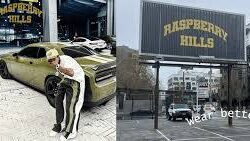Few brands in the modern fashion landscape have managed to blend music and streetwear as seamlessly as Trapstar London.
Since its beginnings in West London, Trapstar has been more than just a clothing label—it’s been a reflection of the city’s underground rhythm. Its DNA is written in beats, lyrics, and street energy.
What started as a small creative collective quickly grew into a global movement, powered by the same rebellious spirit that drives grime and hip-hop culture.
Today, Trapstar’s story can’t be told without music—because music is its heartbeat.
Born from the Sound of the Streets
UK Trapstar roots trace back to the vibrant and often gritty streets of London, where music wasn’t just entertainment—it was expression.
In the early 2000s, London’s underground music scene exploded with the rise of grime and UK hip-hop. Artists like Wiley, Skepta, and Kano were redefining what British sound meant, and their movement needed a look that matched their message.
Trapstar filled that space. Its bold designs, gothic fonts, and mysterious slogans mirrored the energy and attitude of the streets. The music and the fashion evolved together—each influencing the other.
Wearing Trapstar became a symbol of belonging, of being part of something real and unapologetic.
The Soundtrack of the Brand
Trapstar’s name itself carries a rhythmic quality—“Trap” referring to the genre and lifestyle that emerged from the streets, and “Star” symbolizing aspiration and success.
The brand reflects this duality: it’s about struggle and triumph, grind and glory.
From early collaborations with grime artists to partnerships with international superstars, Trapstar built its identity through music. Each drop feels like an album release—carefully teased, highly anticipated, and emotionally resonant.
The connection is more than marketing; it’s a shared story between fashion designers and musicians chasing the same dream.
The Rihanna and Jay-Z Effect
One of the most defining moments in Trapstar’s history came when Rihanna and Jay-Z began wearing the brand.
Jay-Z’s Roc Nation later collaborated with Trapstar, giving the label a global platform and cementing its reputation as a serious force in streetwear.
For fans, seeing megastars like Rihanna, A$AP Rocky, and Stormzy in Trapstar wasn’t just a celebrity endorsement—it was validation. It proved that the sound of the underground could echo on the world stage, and the fashion that came with it could stand beside luxury giants.
That synergy between Trapstar and Roc Nation symbolizes how music can elevate fashion—and how fashion can amplify culture.
Design Inspired by Rhythm and Flow
Music doesn’t just influence Trapstar’s marketing—it shapes its design philosophy.
The brand’s creative direction mirrors the structure of a track: rhythm, layers, tension, and release. Each collection carries emotional beats, balancing chaos and control through color, typography, and texture.
Bold lettering mimics the punch of a bassline. The contrast between dark tones and metallic finishes mirrors the contrast between street life and stardom.
Every jacket, hoodie, and graphic tee feels like it’s part of a visual mixtape—telling the story of the streets through design.
Music Videos as Runways
For Trapstar, music videos are more than entertainment—they’re runways of culture.
From London’s grime scene to global hip-hop visuals, Trapstar appears everywhere. Its presence in videos by artists like Stormzy, Dave, and A$AP Rocky helped spread its influence far beyond traditional fashion channels.
When fans see their favorite artists rocking Trapstar, it’s not just product placement—it’s authentic representation.
These appearances cement the brand’s role as both a participant and curator of musical culture.
The Fusion of Sound and Identity
Trapstar’s motto, “It’s A Secret,” captures the same mysterious allure that music has always had—something you feel before you understand.
Both art forms are about expression and emotion, and both thrive on community.
Trapstar’s ability to translate the energy of music into fabric gives it an edge few brands can replicate. It doesn’t just sell clothes—it sells an experience that resonates with fans across the world.
That’s why Trapstar’s collections often align with music releases, tours, and cultural moments. They exist in rhythm with the sound of their generation.
Empowering the Next Generation
Trapstar’s connection to music also extends to its support for new talent.
Through collaborations and partnerships, the brand gives young artists visibility and confidence. By wearing Trapstar, emerging musicians align themselves with a legacy of self-made success.
The brand becomes a platform—proof that you can rise from the underground and make your mark on the world.
In this way, Trapstar functions as both a fashion label and a cultural amplifier, pushing creativity and authenticity to the forefront. trapstruk.com
Global Sound, Global Style
Trapstar’s musical influence isn’t limited to the UK. Its connection to American hip-hop, European trap, and African Afrobeats has made it a universal symbol of youth culture.
In New York, it’s a streetwear staple.
In Lagos, it represents global cool.
In Tokyo, it’s an emblem of rebellion.
Everywhere, the story is the same: music fans see Trapstar as a reflection of their passion and power.
That global resonance proves one thing—the brand’s sound is as loud as its style.

